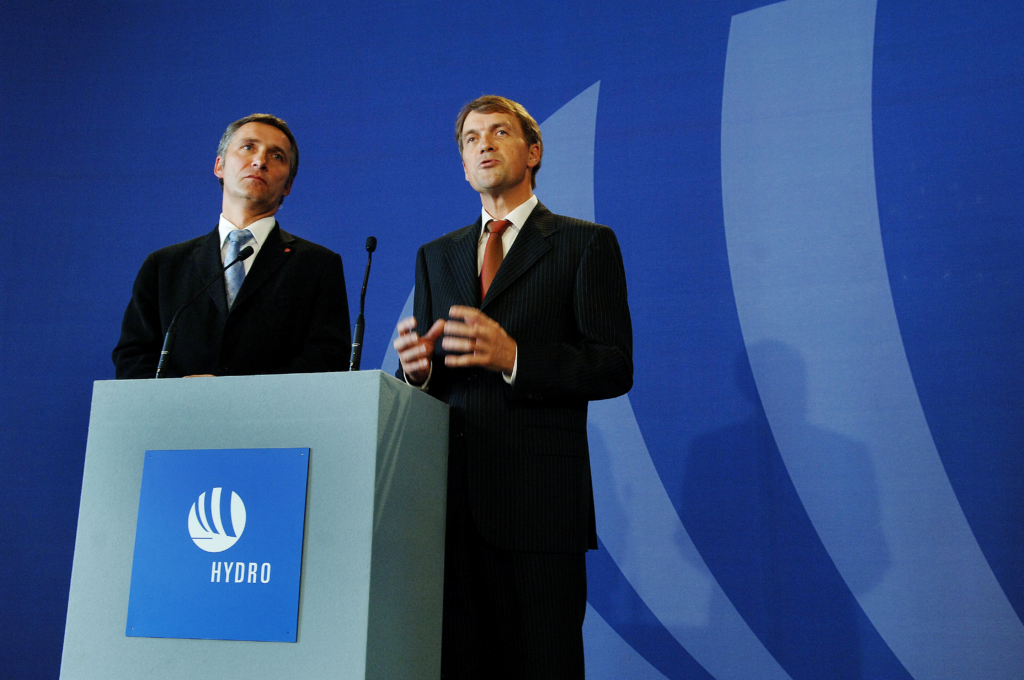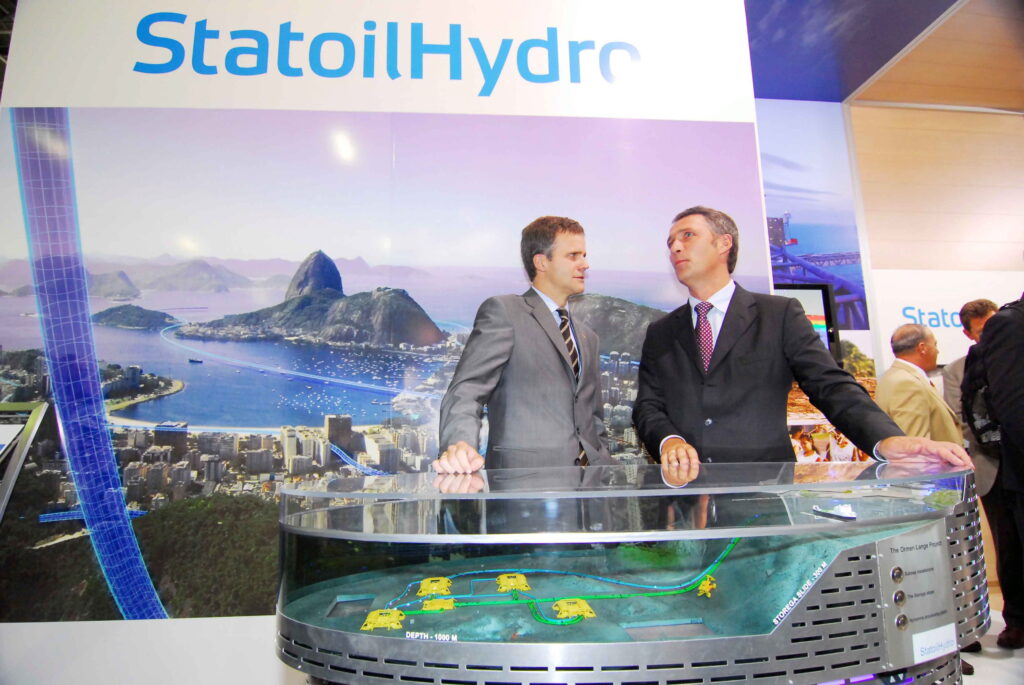The power of initiative

Much of the secret to success with an initiative lies in properly understanding the prevailing circumstances. Statoil has always found it essential to “read” the owner’s interests. Before partial privatisation, this involved “only” the government. But that could be challenge enough – some administrations might be unpredictable and create obstacles when viewed through the Statoil management’s eyes. Others could give the company wide latitude.
With Arve Johnsen as its first CEO, Statoil eventually built up a position which unleashed a political reaction by forces on the non-socialist side in the early 1980s. That resulted by mid-decade in a political compromise on limiting the company’s freedom of action – known as the “wing-clipping”.
Part of its income and expenses was separated out into the state’s direct financial interest (SDFI) in the petroleum sector.
This restructuring probably represented the biggest milestone in Statoil’s first 25 years. Characteristically, it resulted from a political initiative, where the company was forced to accept a substantial curtailment to its cash flow from the oil sector. A few years later, however, fundamental changes came to be initiated by Statoil itself.
Partial privatisation and merger – initiatives by Statoil (and Hydro)
Some speeches are more important than others. At a seminar in Sandefjord south of Oslo in January 1999, Harald Norvik – then Statoil CEO – took the initiative with what amounted to a public call for the company to be partially privatised.[REMOVE]Fotnote: Lerøen, Bjørn Vidar, 2002, Drops of black gold. Statoil 1972-2002, Statoil: 80. That marked the start to serious progress in this direction, and was one of the clearest examples in Statoil’s history where a top management proposal to the political authorities led to lasting changes in the principles governing its operating parameters.[REMOVE]Fotnote: For reactions to the speech, see for example Storsletten, Aslak Versto, 2018, Prosessen bak delprivatiseringen av Statoil i 2001 – fra selskap til vedtak. master’s thesis in history, University of Oslo: 35.
The start to merger negotiations between Statoil and Norsk Hydro in 2006 bore similarities with the early stage of the partial privatisation. That summer, Statoil CEO Helge Lund visited Eivind Reiten, his opposite number in Hydro, at his holiday cabin and hammered out important parts of what was to become the basis for an amalgamation. This initiative was put to the politicians in the autumn, and the merger with Hydro’s oil and energy division became a reality on 1 October 2007 under the name StatoilHydro.
Antecedents – Statoil feelers and soundings halted
Among other similarities worth noting between the partial privatisation and the merger, the most important is perhaps a willingness to stay the course after initial feelers over both processes had been firmly stamped on.

Norvik, for example, received a clearly negative response from the minister (a Labour one, at that time) when he tried to secure changes to the separation between Statoil and the SDFI.[REMOVE]Fotnote: Lerøen, Bjørn Vidar, op.cit: 83. Many commentators took the view that access to the SDFI’s assets was a precondition for the company’s ability to compete internationally after a partially privatisation. In connection with the latter, Statoil once again devoted considerable efforts to arguing for the greatest possible control over the SDFI – which ended up with it being allowed to acquire 15 per cent of these assets.[REMOVE]Fotnote: 1) One big commitment by the company management was the report on Videreutvikling av Statoil og SDØE, on the process, see the Regional State Archives in Stavanger, Pa 1339 – Statoil ASA. 0001 – Sentralarkivet/Fjernarkivet, Abb – L0047 og L0048. 2) The final report was contained in proposition no 36 (2000-2001) to the Storting, Eierskap i Statoil og fremtidig forvaltning av SDØE, vedlegg 1: Videreutvikling av Statoil og SDØE – Statoil-styrets rapport av 13. august 1999, https://www.regjeringen.no/no/dokumenter/stprp-nr-36-2000-2001-/id204183/?ch=7, accessed 31 March 2022.
The merger in 2006-07 also had a chequered history. Soundings on a possible amalgamation in 2004 were unsuccessful. Without a permanent CEO after Olav Fjell had been forced to resign in September 2003, Statoil was in a relatively weak position during talks with Hydro. And news of the discussions received a cool public reception when leaked to the press. A merger was thereby put on hold until conditions came right in 2006.
Key lesson – political entrenchment needed
As noted above, understanding the prevailing circumstances is crucial for success. Where Statoil’s initiatives were concerned, this largely involved knowing how far it could go without being stopped by the government – represented first and foremost by the premier and the minister responsible for the oil sector. That called for a large dose of political awareness.
Although many factors played a part, it is probably not entirely irrelevant that the two CEOs who were able to achieve the partial privatisation and merger – Norvik and Lund respectively – had personal experience from the political sphere. The former had served in government, including as state secretary (junior minister) for Labour at the petroleum and energy ministry in 1979-81, while the latter was political adviser to the Conservative Party group in the Storting (parliament) in 1988-90.
Breach and continuity
One difference between the two processes is the extent to which Norvik and Lund had prior engagement with them. Where the partial privatisation was concerned, Norvik had been personally involved for a decade in assessing and testing out the lie of the land for realising this plan. By contrast, Lund inherited the lessons learnt by his predecessors about opportunities for winning acceptance of a Statoil-Hydro merger.

Looking at these issues from the government’s perspective, perhaps the most eye-catching feature is the continuity – at least in the case of Labour politician Jens Stoltenberg. He was minister of energy and industry in 1993-96 and championed partial privatisation during his first term as prime minister in 2000-01. In his second term (2005-13), he wholeheartedly supported the merger plan when Lund and Reiten presented it to him in the autumn of 2006.[REMOVE]Fotnote: Boon, Marten, 2022, En nasjonal kjempe. Statoil og Equinor etter 2001. Universitetsforlaget: 203. It is also worth noting that Stoltenberg’s longest continuous term as premier (2005-13) coincided in its entirely with Lund’s time as Statoil CEO (2004-14).
In other words, Statoil’s initiatives were warmly welcomed by Stoltenberg. So it might appear that continuity in personal involvement was at least as significant at prime ministerial level as with the chief executives in these two cases.
Statoil succeeded in implementing both partial privatisation and the merger for a number of reasons. It has been emphasised here that the basic recipe in winning acceptance for such initiatives was securing adequate government support. In any event, the outcome of the merger process was a partially privatised company which became completely dominant on the NCS.
arrow_backTechnology development in StatoilGas to food – bioprotein at Tjeldbergoddenarrow_forward